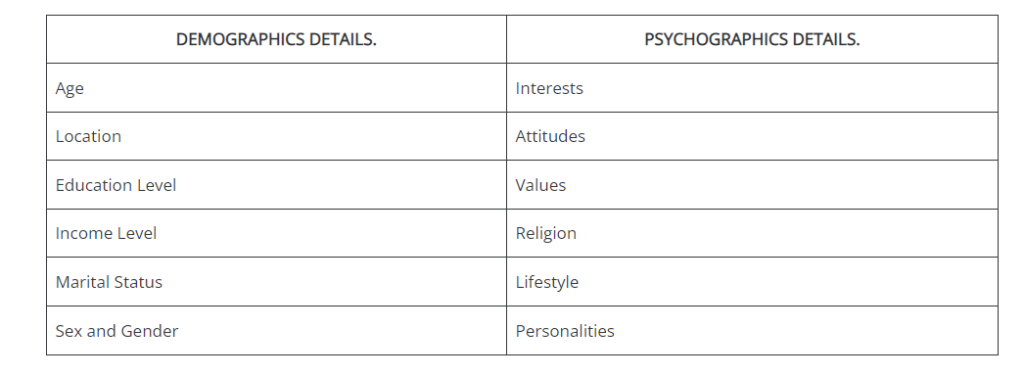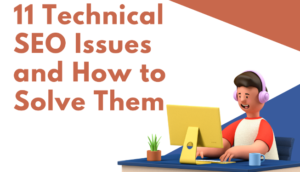Having a content strategy is mandatory to run a successful content marketing campaign. Without a solid content strategy, you risk wasting time and other resources creating and distributing content that adds no value to your business.
A content strategy will help you plan, create, distribute, and measure your content’s impact on your audience. Developing a content strategy will help you create quality content specifically targeted to your audience to achieve your goals.
This article dives into the process of developing a great content strategy that will help make your content marketing a success story.
STEP 1: Determine Your Goal
Before you start creating content, you need to know what goals you intend to achieve. They should be realistic and measurable goals. These goals can be;
- To increase brand awareness
- To increase sales
- To increase customer engagement
- To increase conversion rates
- etc.
You will determine the goal of your content depending on the stage of your business. You might want to create content that boosts your brand awareness and increases your engagement if you are starting. To achieve such goals at the early stages of your business, you will have to create educational and explainer content to familiarize yourself with the consumer.
Likewise, if you are running an established business, your content goals should be to increase sales and conversion rates and retain existing customers. Your goals should guide your content creation. Different goals require different content strategies.
Also read: Why Is a Content Strategy Important for Business Growth?
STEP 2: Research Your Audience
Before you start creating content, you need to know your target audience. To define your audience, you must create a detailed description of a person to represent them: a buyer persona.
But who are your audience? They can be both your existing customers and new customers. To compile your customer’s data, you will need analytics tools like Google Ads Audience insights or Meta Business Suite, formally Facebook Audience Insight. These tools will help you research and create a buyer persona based on their demographic and psychographic attributes.

After creating your buyer persona, you need to figure out which platform they use and how you plan for them to find your content. To determine where your target audience is, you can use social media analytic tools, google analytical tools, or CMS from Hootsuite and Hubspot. You can alternatively spy on your competitors’ audience using Semrush and Buzzsumo.
Create content that explicitly targets a buyer persona, depending on your goal. If your goal is to increase sales, your buyer persona should have an audience that is more likely to make a purchase. And not an audience that is more likely to sign up for an email newsletter.
STEP 3: Find the Right Keywords
Now that you know your goals and who your audience is, it is time to find out what content they want. The content you will provide your audience should help you achieve your goals. The right keywords will tell you the problems your audience is facing, what they are searching for and what content they are engaging with. Let’s look at how to find the right keywords:
- Brainstorm: Create a list of topics, headlines, keywords, subjects, and themes that align with your content goal. Look at the terms your audience uses to find your business and search for competitors’ content. You can use Google Analytics to find those terms. Now narrow down the list.
- Research: Now that you have a narrower list of keywords, you will want to check if they hold any water. You do this by weighing their search volume, relevancy, and competition. Tools like Google Keyword Planner, Moz, and Ahref will help you analyze those keywords.
- Analyze Competitors: A great content strategy aims to help you stand out from the crowd. To do that, you need to look at how your competitors use your industry’s keywords. It would help if you aimed to create unique and 100% better content than theirs.
- Optimize your content for search engines: You should develop content that takes advantage of the keyword you choose. The first step should be creating quality content that adds value to your audience. It doesn’t matter how good your keyword is; it won’t make it to SERPs without providing quality.
TIP: You should look at your older content and develop them to align with your current strategy. If the content is entirely outdated and no longer adds value to your audience, you scrap it.
STEP 4: Manage and Track your Content.
You should develop a strategy that will help you keep track of your content strategy. Without tracking, there is no way to tell whether you achieved your desired goals or not. Remember, content marketing is a long-term strategy, so you will need to come back to your content after every while to update it to reflect the current audience needs.
It would be best to look at your analytics to see how well your strategy worked, where you need to improve, and what isn’t working. This way, you will know where to direct your energy. Most publishers have inbuilt analytic tools, but you might want to use powerful tools like Hubspot’s CMS to measure your content’s effectiveness truly.
Developing a great content strategy is crucial to the outcome of your content marketing campaign. You should be able to control the process right from the ideation stage. With everyone churning out content that isn’t beneficial to consumers, you risk being among them without a proper plan.





